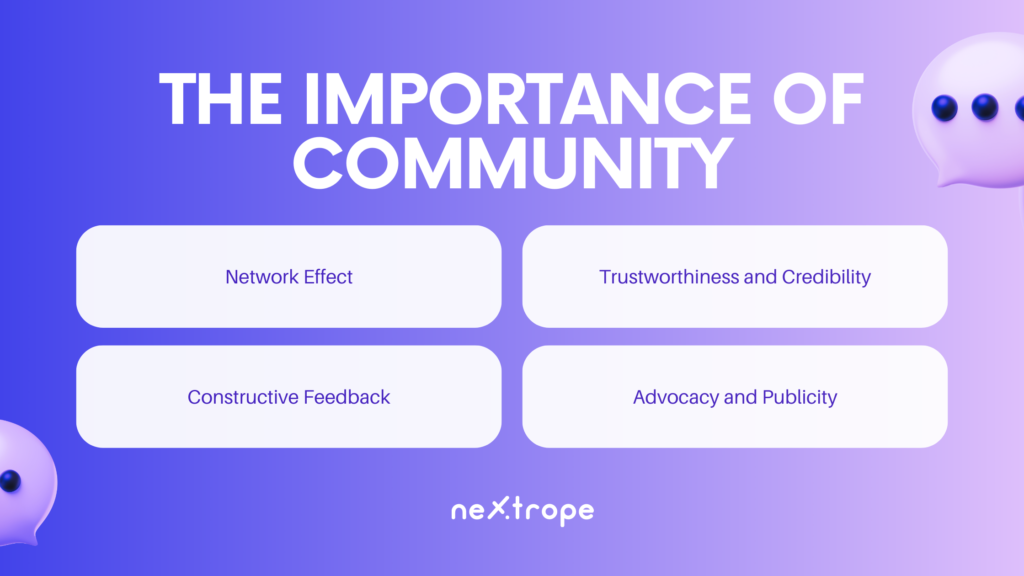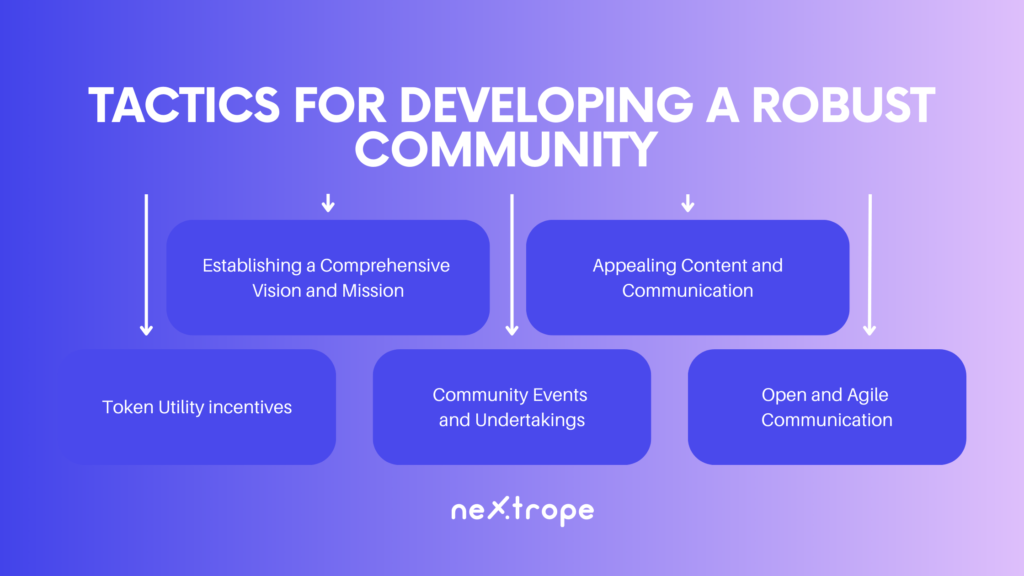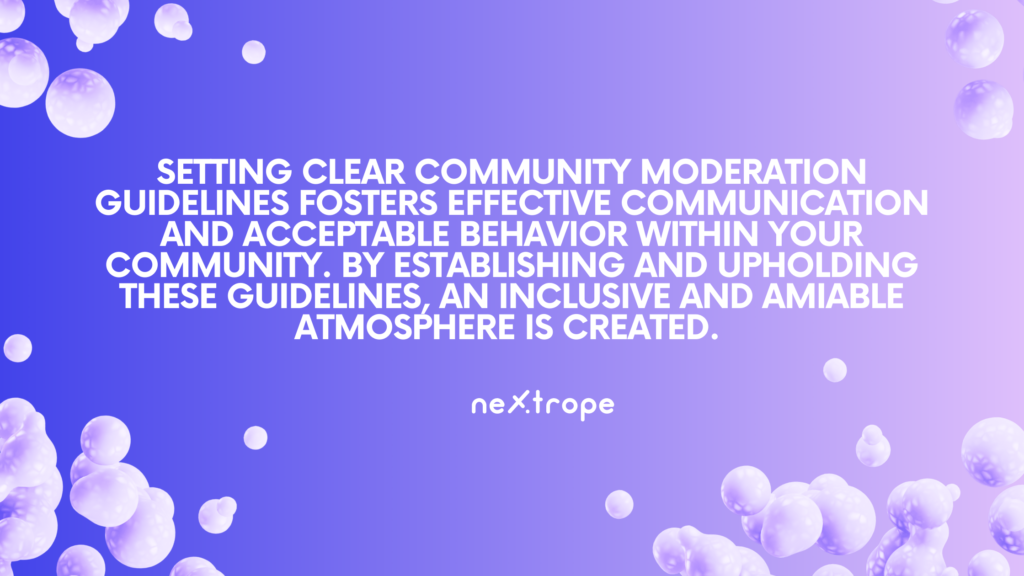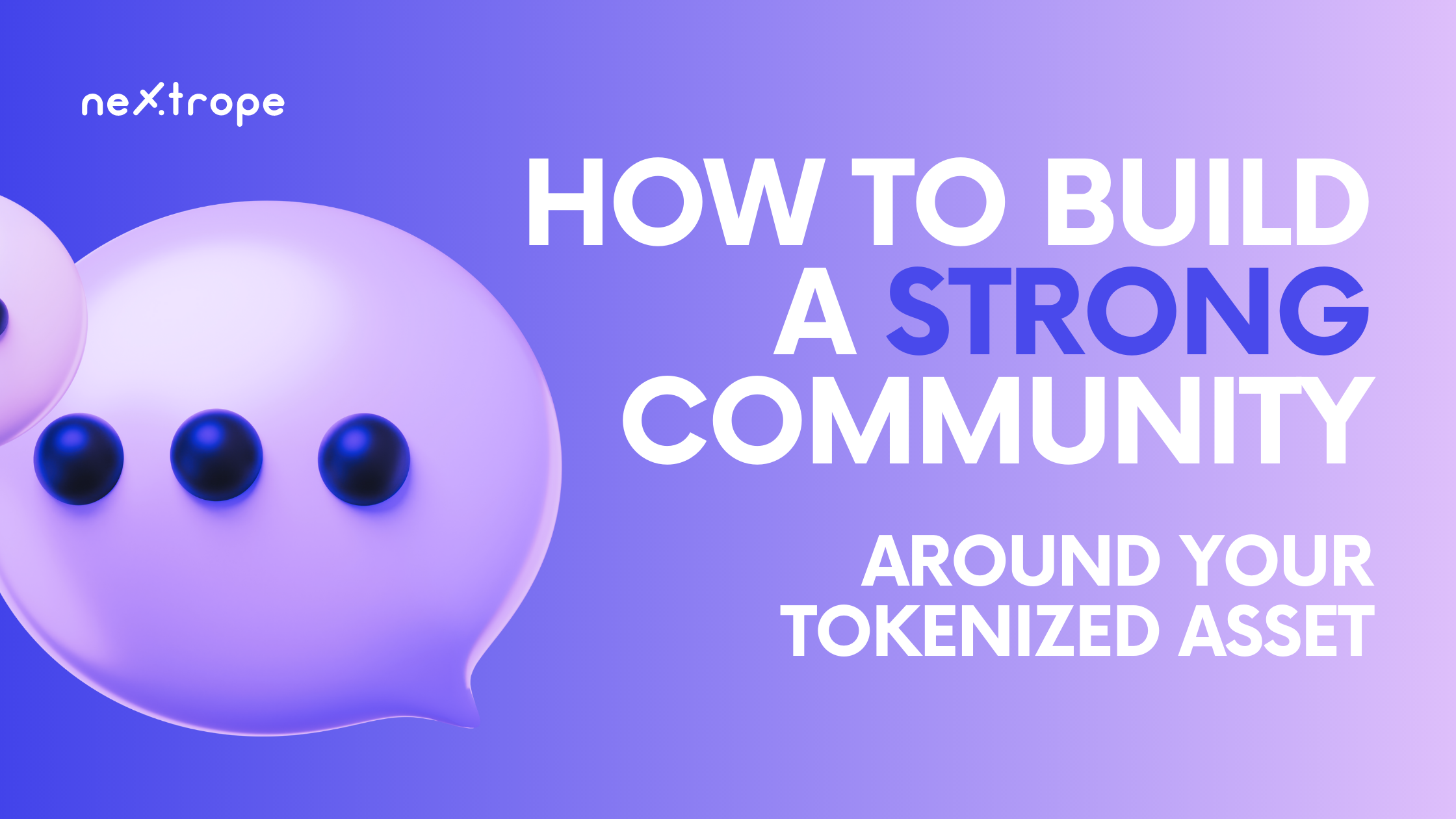For any project to succeed, including tokenized assets, it is crucial to establish a solid community. Amidst the advancing realms of blockchain, artificial intelligence, and cryptocurrencies, tokenization has surfaced as an influential means to digitally embody real-world assets. Tokenized assets provide numerous perks like improved liquidity, fractional ownership, and better transferability.
The Significance of Community in Tokenized Asset Success
The importance of community
A tokenized asset’s success greatly depends on the vigor and involvement of its community. A dynamic community acts as the main driving element for adoption, liquidity, and overall appreciation of the asset’s value. Here are some reasons why community plays a crucial role in the realm of tokenized assets:

- Network Effect: An expanding community attracts a greater number of participants, generating a network effect that enhances the asset’s visibility and liquidity. As the community increases in size, the asset gains traction and piques the interest of potential investors and users.
- Trustworthiness and Credibility: A robust community establishes trust and credibility for a tokenized asset. When prospective investors observe an engaged, supportive community, they perceive the asset as legitimate and dependable, resulting in increased investment and adoption.
- Constructive Feedback: Members of the community deliver valuable feedback, insights, and suggestions regarding enhancements to tokenized assets. They can propose new features, pinpoint possible issues, and contribute to the overall development and progression of the asset.
- Advocacy and Publicity: An enthusiastic, proactive community serves as a champion for tokenized assets. Community members often become brand promoters who raise awareness and market the asset throughout their networks. Their eagerness to share recommendations through word-of-mouth can greatly impact the growth of assets.
Community-driven projects vs centralized projects
Tokenized assets can emerge from either community-driven or centralized projects. Grasping the distinction between these two types is vital to understanding how communities influence the success of tokenized assets.
Community-driven projects require active involvement from members in decision-making processes. Such projects are generally decentralized and dependent on consensus-based governance models, wherein token holders possess voting rights that exert influence over project decisions. In these settings, communities play an essential part in determining an asset’s course and promoting its expansion.
In contrast, centralized projects follow a top-down strategy, with decision-making processes controlled by central authorities or teams. Although these projects can still involve a community, their role in governance and decision-making is usually restricted. Nevertheless, a vibrant and engaged community can still contribute valuable feedback and support to centralized projects, which enhances the chance of success for the asset.
Tactics for Developing a Robust Community Around Tokenized Asset

Establishing a Comprehensive Vision and Mission
Initiating community-building entails forming an unequivocal vision and mission for your tokenized asset. This covers its reason for existence, value offering, and long-range objectives. By effectively conveying the positives and potential of the asset, you will draw in those who share your project’s aims.
Appealing Content and Communication
Producing and disseminating appealing content is crucial to attracting and retaining community members. Maintain a prominent online presence through a devoted blog and proactive social media channels.
Token Utility incentives
Ensuring meaningful utility for your token is crucial for increasing community involvement. Design tokenomics that correspond with the asset’s purpose while incentivizing active participation from community members.
Community Events and Undertakings
Coordinating community events and tasks cultivates a sense of inclusion and stimulates interaction among members. Launch opportunities for networking, knowledge exchange, and cooperation.
Open and Agile Communication
Openness and agile communication are crucial for trust-building and sustaining a robust community. Keep the community well-informed about project advancements, milestones, and potential obstacles.
Influencers and Partnerships
To substantially expand the reach and influence of your tokenized asset community, it is crucial to collaborate with influencers and forge strategic partnerships. Gaining support from influencers and reputed companies in the blockchain and cryptocurrency realms can boost awareness, establish credibility, and draw a broader audience. Take into account these methods:
Teaming up with influencers and thought leaders
Engaging industry-respected influencers and thought leaders can facilitate promotion of your tokenized asset, as they possess credibility and hold considerable influence over their followers.
Developing strategic partnerships
Mutual benefits and growth can result from strategic partnerships with well-established blockchain projects, businesses, or organizations. Such collaborations can boost your tokenized asset’s credibility, enable access to new markets, and generate integration opportunities. Reflect on these strategies:
- Pursue partnerships with prominent blockchain projects or companies: Identify projects or firms that compliment your tokenized asset’s offering or cater to a similar target group. Look into partnership possibilities that involve cross-promotion, combined marketing endeavors, or service integration.
- Work together on joint initiatives or integration options: In collaboration with partner organizations, embark on joint ventures such as co-hosted events, cooperative research projects, or the development of compatible solutions. Integrating services or products can generate added value for both communities.
Regulating Community Interaction and Providing Support
Efficient community moderation and responsive support are essential in maintaining an engaged and healthy community surrounding your tokenized asset. Ensuring that discussions remain focused, polite, and in line with the project’s objectives is the goal of community moderation. Support systems play a vital role in promptly addressing community questions, technical concerns, and other issues. Keep these strategies in mind:
Implementing community moderation guidelines

Setting clear community moderation guidelines fosters effective communication and acceptable behavior within your community. By establishing and upholding these guidelines, an inclusive and amiable atmosphere is created.
Providing prompt support
Swift and proficient support is crucial in retaining community satisfaction and trust. Establish means for community members to request assistance and guarantee that their inquiries and concerns receive prompt attention.
Enhancing and Maintaining the Community
The initial stage of constructing a solid community is crucial, but equally vital for your tokenized asset’s lasting success is the ability to scale and maintain that community. As your project expands, establish approaches that not only facilitate community growth but also promote continuous engagement. Consider employing these tactics:
Strategies for growing the community
In order to broaden your community, adopt strategies that motivate current members to invite new ones and attract additional participants. This contributes to a broader network effect and increased community diversity.
Adapting community governance
As your community expands, think about progressively decentralizing decision-making processes to empower members and guarantee the project’s long-term viability. Including the community in governance fosters trust and creates a sense of ownership.
Conclusion
Developing a robust community centered on your tokenized asset is crucial for ensuring its prosperity and enduring stability. By engaging influencers, forging strategic collaborations, and enforcing effective community moderation, you can appeal to and incorporate a lively community. In addition, scaling the community and including its members in decisions guarantees the project’s growth and evolution align with their interests.
Be sure to articulate your tokenized asset’s vision and mission, offer valuable token utility, and encourage transparent and active communication with the community. By implementing these techniques and adjusting to the changing requirements of your community, you establish a solid basis for your tokenized asset while fostering a thriving ecosystem that benefits all involved parties.
As the fields of blockchain, AI, and cryptocurrency continue to develop, projects driven by communities possess enormous potential to influence the future of tokenized assets. By cultivating a resilient community, your project is well-positioned for growth, innovation, and widespread adoption in this dynamic and revolutionary industry.
Nextrope Tokenization Launchpad Platform
Nextrope Launchpad Platform is a White Label solution in a Software-as-a-Service model that helps you launch your project within a month and fundraise with Initial Coin Offering (ICO) or Security Token Offering (STO).



